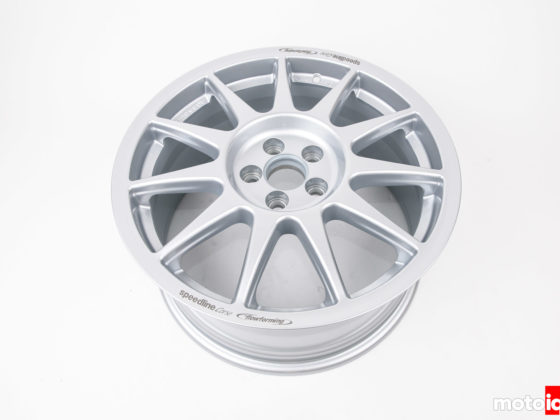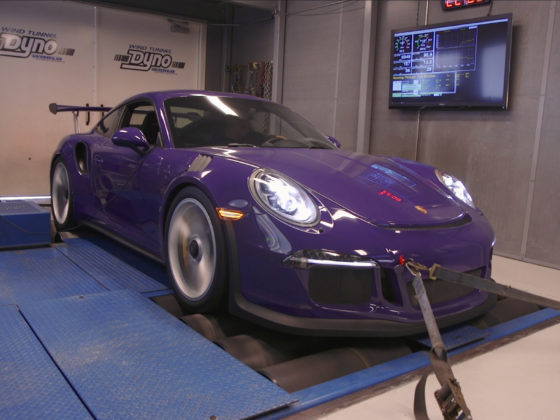
With the shifter over in manual mode, downshift is forward and upshift is rearward. The little toggle switch in the lower left switches the drive mode to Sport. This is what sold my wife as she squirted through traffic during her test drive and squealed the tires a bit around a highway ramp scaring the sales guy a bit. What Sport mode does while in automatic is hold onto a lower gear assuming that the driver is driving in a manner where they want instant and max torque available. In Normal mode after hard acceleration, the transmission will automatically upshift to a higher gear to conserve gas. In Sport mode, however, the transmission will hang onto the low gear for something like ten seconds to keep the engine revs up, anticipating that the driver wants to have max acceleration again. It will finally upshift if the driver doesn’t stab the go-pedal, but as soon as you give it a good dose of throttle again, it will hang onto the low gear again. You know this car was designed by driving enthusiasts.

As you can see, the weather conditions were not conducive to finding traction limits. My driving partner for the day was Bill Howard (who writes for PCMag and Extremetech) and he takes much better pictures than I do as you can tell. Check out Bill’s review for detailed info on the trims and interior details which I do not cover. Our speeds varied between 60-100km/h with the engine RPMs hanging around in the 1500-2000rpm engine range. As designed, the new 2.5T engine provided immediate, effortless, and shift-free acceleration in these vehicles and engine speed ranges. You could also feel the GVC+ doing its thing. There was no steering slop or dead on-center feel; steering input was met with vehicle reaction. In a steady-state corner, it felt like the suspension geometry had a lot of caster where it wanted to straighten out the steering wheel. So that should be the GVC+ working to improve corner turn-out.
Mazda did some additional suspension tweaking with another clever idea. The more common adjustments Mazda made were to change the front geometry a bit to reduce roll understeer. They also reduced the friction in the dampers along with revised top mounts to improve the smoothness. Back in the early days of mountain biking front suspension forks, the term was stiction which I think was short for sticky-friction. Obviously, suspension that doesn’t move smoothly has a negative impact on handling performance. So onto the clever bit of engineering where Mazda implemented a rebound spring in the damper. It’s my understanding that it limits droop travel. What that ends up doing is reducing body roll by lifting the inside wheel while still allowing for softer springs for a compliant ride expected in a CUV. So it reduces that feeling of wanting to tip over in a hard corner. There’s that word ‘feel’ again. Dave said it doesn’t actually make the CX-5 corner faster, but the car feels less tipsy.

The HUD on the CX-5 is projected on the windshield and is very easy to see even in the snowy conditions. It provided cool information like the speed limit on the stretch of road we were driving along with flashing warnings when it detected us drifting out of our lane. It even popped up a stop sign symbol when the car detected a real stop sign ahead.

This is the dash with a big tach on the left. The center display shows all sorts of things which I didn’t really pay attention to. I had a lot of fun just chatting with Bill and the cabin was very quiet isolating road noise. And the HUD showed me my speed and the speed limit in my direct line of sight which was all the info I needed.




7 comments
The driving force graph makes no sense.
F=ma
Not F=m
Probably marketing person just mislabeling what should be kgf. Which I need to fix myself… will edit. Thanks for the catch.
Looking at the graph a little more closely now, looks like about 75kgf to maintain speed and 325kgf to have desired acceleration. So 250kgf is about 2450N going towards acceleration and a vehicle mass of 1750kg. Works out to about 1.4 m/s^2. 1.4 m/s = 3.13mph. So…. increase almost 10mph in 3 seconds. Seems like a reasonable acceleration rate for this passing scenario.
Thanks for the clarification.
Why Mazda didn’t take full advantage of their ‘dyanamic pressure turbo’ system by squeezing out more top end power without sacrificing low end torque and causing turbo lag?
They would have to go to a bigger turbo to get more power on the top-end. That would not allow them to meet their torque target at 2000rpm where they are focused on driveability because that’s where their users spend like 97% of their time.
Ok I see, I just wish they have a more performance orientated option as well.
Does the low end and mid range performance feel more like a big, torquey naturally aspirated engine than a typical turbocharged engine?
Funny thing about that stability control: I noticed that my 2018 Mazda MX-5 GT will quite happily do donuts, which isn’t quite possible with an open differential. Sure enough, the tail end only whips out once a light on the dashboard starts blinking: the ABS is transferring the torque to the opposite wheel, even though stability control is off, in order to facilitate irresponsible driving.
Also, since I couldn’t find it on paper anywhere: the headlamps turn to see around corners, though mine inexplicably lacks the levelling system.